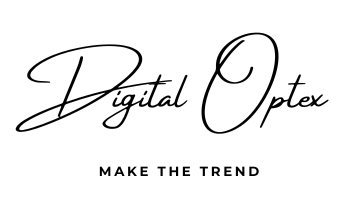Introduction
Have you ever paused at a newsstand, mesmerized by the bold, colourful magazine covers staring yet again at you? Magazine covers are more than certainly pretty snapshots—they may be gateways to tales, thoughts, and emotions. But what makes a mag cover iconic? Why perform a little cover live etched in our memories even as others fade away?
In this text, we are going to delve into the charm worldwide of mag covers, exploring their facts, format factors, and cultural impact. Whether you are a format fanatic or a curious reader, this deep dive will display how those covers form our international and the memories we inform.
1. A Brief History of Magazine Covers
Magazine covers have a rich statistics relationship and decrease back to the seventeenth century. Early covers have been easy, imparting best textual content and from time to time a small ornamental body. Over time, they are superior to encompass illustrations and, ultimately, images. The overdue 19th and early 20th centuries marked a turning detail at the same time as covers have become colourful, captivating, and clever.
Why It Matters:
Understanding this information lets us recognize the artistry and idea in the back of each cover we see nowadays.
2. The Evolution of Magazine Covers
From black-and-white sketches to dynamic virtual designs, mag covers are continuously superior. Technological enhancements in printing and pictures have significantly prompted their transformation.
Key Milestones:
- 1900s: Illustrative artwork ruled.
- 1950s: Rise of celebrity photographs.
- 2000s: Digital improving has become a staple.
3. Key Elements of a Great Cover
What makes a cowl stand out? A great mag cowl combines impactful visuals, compelling headlines, and a clean message.
Essentials Include:
- A setting photo or example.
- Bold typography.
- A headline that sparks a hobby.
4. Typography: The Voice of the Cover
Typography performs a vital position in putting the tone of a magazine cowl. The preference of fonts, their length, and area can evoke emotions and communicate the mag’s identification.
Pro Tip:
Pair an ambitious, sans-serif font with a swish, serif typeface for an undying appearance.
5. Photography and Illustration
High-awesome images or artwork is frequently the centerpiece of a mag cover. From superstar images to precise illustrations, the ones visuals draw readers in.
Did You Know?
Annie Leibovitz’s placing superstar pix has graced endless iconic covers.
6. Color Psychology in Covers
Colors aren’t without a doubt ornamental; they affect how we experience them. Bright sunglasses grasp hobby, at the equal time as muted tones advocate sophistication.
Examples:
Red conveys power and urgency.
Blue conjures up recollect and calmness.
7. Famous Magazine Covers That Made History
Some covers have transcended their time to come to be cultural symbols. Think of John Lennon and Yoko Ono on Rolling Stone or the “Are You Mom Enough?” cowl of TIME.
Why They’re Iconic:
They captured pivotal moments, sparking conversations and controversy.
8. The Role of Covers in Branding
A magazine’s cowl is its calling card. Consistent format factors like trademarks and shade schemes construct brand identification and loyalty.
Example:
The clean, minimalist fashion of The New Yorker instantly conveys sophistication.
9. Digital vs. Print Covers
In the virtual age, magazine covers want to paint everything in print and online. While print permits for tactile engagement, virtual covers provide interactivity.
Challenges:
Adapting designs to multiple shoe sizes and resolutions.
10. How Covers Capture Current Trends
Magazine covers mirror societal tendencies, whether or not it’s thru style, politics, or popular manner of life. They are characteristic snapshots of the instances.
Current Example:
Environmental situation matters dominate many covers these days, showcasing our developing focus on climate change.
11. Challenges in Magazine Cover Design
Designing a cowl isn’t always any easy feat. It involves balancing creativity with marketability.
- Common Hurdles:
- Staying specific in a saturated market.
- Appealing to diverse audiences.
12. The Future of Magazine Covers
As the era advances, magazine covers have become greater interactive, presenting augmented fact (AR) and motion images.
What to Expect:
Personalized covers tailor-made to individual readers’ alternatives.
13. DIY Tips for Creating Stunning Covers
Want to create your private magazine cowl? Here are some suggestions:
- Use High-Quality Images: Grainy visuals reduce it.
- Keep It Simple: Don’t overcrowd the design.
- Experiment With Layouts: Play with symmetry and asymmetry.
Conclusion
Magazine covers are greater than handiest a visible deal with. They are effective gadgets for storytelling, branding, and taking pics the essence of an era. From their historical roots to their digital future, covers hold to conform, inspiring us with their creativity and effect.
FAQs About Magazine Covers
1. What makes a magazine cover a success?
A successful cowl grabs a hobby, communicates a clean message, and resonates with its target market.
2. Why are mag covers vital?
Covers function as the face of the mag, drawing readers in and reflecting the e-book’s identity.
3. How do digital and print covers range?
Digital covers regularly consist of interactive elements, even as print covers depend on tactile and visual enchantment.
4. Can everybody format a mag cover?
Yes, with the proper system and creativity, anybody can format a compelling cover.
5. What tendencies are shaping present day mag covers?
Sustainability, formidable minimalism, and interactive designs are vital inclinations in modern-day magazine covers.
Read Allso : lit ai inc magazine


